Sunlight plays an important role in plant life, its lack negatively affects photosynthesis, which leads to a slowdown in vital functions. You can solve the problem with artificial lighting. But conventional lamps are not suitable for this purpose, since a special spectrum is required, which not all light sources can emit. Consider how to make your own lighting for indoor plants or seedlings using LED phyto tape. Let's start with theory.
It has been established that a certain length of light waves is required for biological processes in plants. Figure 1 is a graph showing this relationship.
Legend:
- A - graph of the dependence of the synthesis of chlorophyll;
- B - photosynthesis;
- C - photomorphogenesis.
We see that plants most intensively absorb light waves with a length of 445 nM and 660 nM, which fall on the blue and red regions of the spectrum. That is why conventional sources are not suitable for artificial lighting, you will need a phytolamp or phytol tape. The most effective backlight in which the ratio of blue to red light is 1 to 4-6.
Benefits of phyto tape over other sources
Here are several factors that speak in favor of LED backlighting:
- lower consumption compared to halogen, mercury and luminescent phyto sources;
- narrow spectral range guarantees maximum efficiency;
- low supply voltage improves safety;
- high efficiency;
- less susceptible to heat than light bulbs, therefore, they can be located closer to plants, which allows you to use a source of lower intensity;
- do not contain substances that pose a threat to health.

Unfortunately, such a source has one significant drawback that limits its widespread use - high cost, so we will consider alternative options.
Full Spectrum Plant Growth LED Strip Light
Sometimes this is called RGB sources, which is not correct, since it is technologically impossible to install full spectrum LEDs on a tape.
The USKI source is a blue spectrum LED covered with a special luminescent layer. This design makes it possible to emit a luminous flux in the range of 400-800 nM, while the peak intensity falls on 630-640 nM (the spectrogram is shown in Figure 3).
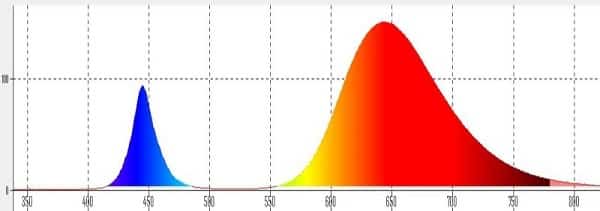
Figure 3. Spectrogram of the USKI LED
Some unscrupulous manufacturers indicate in their products a peak intensity of 660 nM, this, to put it mildly, does not correspond to reality, since the technology used does not allow obtaining a source with such a characteristic. This limitation can be bypassed in the manufacture of matrices, for this purpose I install several crystals of the red spectrum in them.

The cost of this type of LED source is not much less than phyto tape, which makes it not an entirely acceptable alternative.
Use of blue and red LED strips
As an economical option, red (630nM) and blue (465nM) LED strip can be used to illuminate indoor plants. Their peak intensity is slightly shifted from the phytospectrum, but this is not critical, the efficiency of such lighting will decrease, but not significantly.
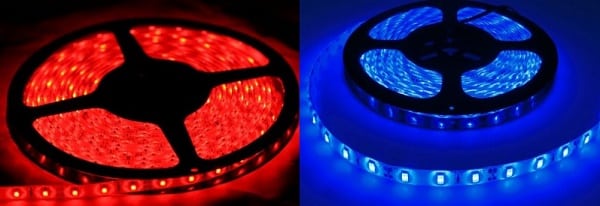
Instead of two tapes of different colors, you can use one RGB, but to control its operation, in addition to the power supply, a special controller will be required, which leads to an increase in the cost of the structure.
Calculation of backlight power and tape length
To illuminate indoor plants or seedlings, the power of the lamp is selected at the rate of 30-50 W per square meter (in the presence of natural light). Knowing the characteristics of the LED strip and the area of the room greenhouse, it is easy to make the necessary calculations.
Let's say we need to organize a backlight for a seedling box with an area of 0.2 m 2 (20x100) cm, therefore, the power of the backlight source should be 8 W (40 * 0.2). If you choose tape 3528-60 (4.8 W / m), then it will take two meters.
Do not forget about the ratio between red and blue LEDs, which means we take 0.5 m of blue tape and 1.5 m of red, that is, 1 to 3. As a result, there will be 30 blue LEDs and 90 red LEDs in the backlight.
You should pay attention to the feature of the tapes, it consists of segments, each has three LEDs, this is an indivisible part that determines the cutting ratio. For 3528-60, this parameter is 5 cm, and for 3528-120 - 2.5 cm. In Figure 6, a red circle marks the place where cutting can be done.
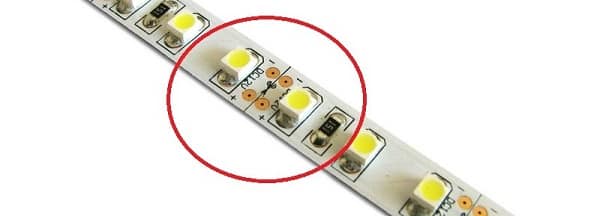
Fig. 6. The tape can only be cut at the specified locations
It makes no sense to use a tape with a silicone coating to illuminate indoor plants, especially since it reduces the intensity of the luminous flux.
Backlight power supply
Having decided on the power of the tape, we choose a power supply for it. Here it is necessary to take into account the characteristic features of LEDs, they require current stabilization, not voltage. Ohm's law will help to calculate the current consumed by the tape: I = U / P, where U is the supply voltage of the tape, P is its power. For example, for a luminaire that consumes 9.6 W, you will need a power supply (12 V) for at least 0.8 A (12 / 9.6 = 0.8). The cost of such devices is about 100-120 rubles.
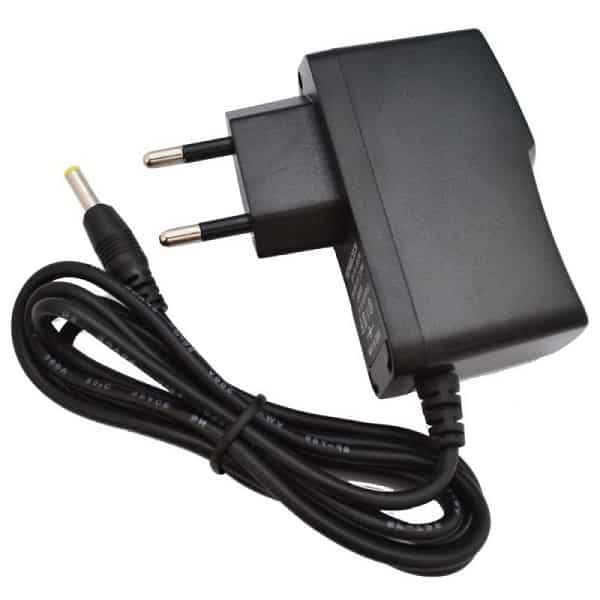
Considering the low cost of a power supply unit of this class, it makes no sense to make them on your own, it is better to find a more worthy application for the "radio amateur itch".
It is also pointless to make a more powerful current stabilizer with your own hands; on the well-known website of Chinese manufacturers, you can purchase such a product, as shown in Figure 8, for only 50 rubles (with free shipping).
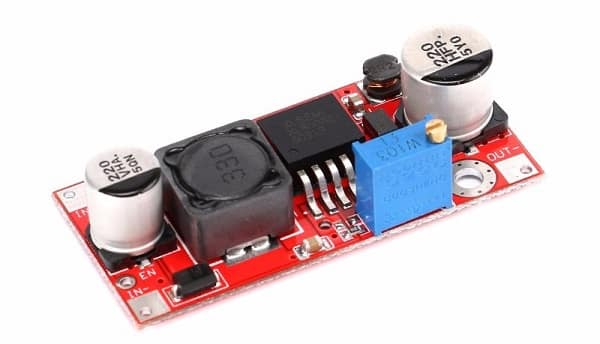
Figure 8. Current stabilizer for 3 A (China)
Please note that the device shown in the figure is a current stabilizer designed for an input voltage of 3.5 to 35 V (DC), respectively, you cannot connect it directly to a 220 V outlet. First, it is necessary to lower the voltage and convert it from AC to DC, that is, to assemble the simplest circuit based on a transformer, a diode bridge and a polar capacitor (see Fig. 9).

Figure 9. Diagram of an elementary power supply
Connection
Now that we have decided on everything necessary, we can begin to manufacture a phyto-lamp for a box with seedlings 20x100 cm. If lighting is needed for another area, the article contains all the information necessary for recalculations.
From the materials we need:
- a fragment of a fiberboard sheet with a thickness of 4-6 mm and dimensions of 60x20 cm;
- profile for UD-27 drywall - 2 meters;
- LED strip for plants - 2 m or 1.5 m red and 0.5 m blue;
- power supply unit for 12 V and 1 A;
- copper stranded wire with a cross section of 0.75, for example PVA;
- fasteners.
Required tools:
- soldering iron 25 W;
- ordinary and metal scissors;
- screwdriver with a cross bit and a drill with a diameter of 3mm;
- assembly knife.
Build Algorithm:
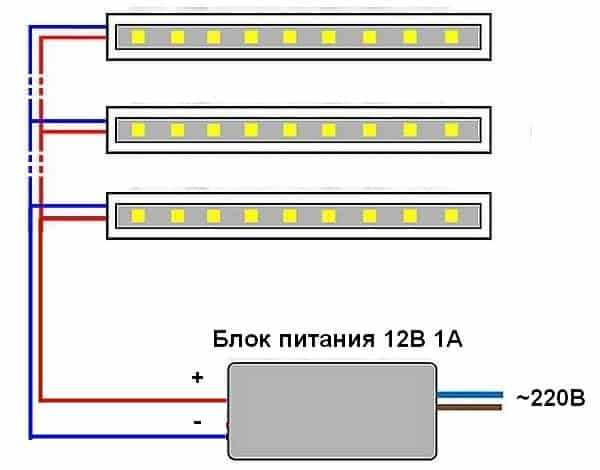
- We turn on the assembled structure and check its performance.
The assembled phyto-light can be installed on racks or suspended over plants.



